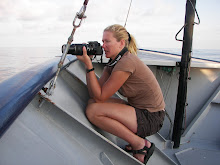
Although it is hard to believe, our incredible Antarctic journey is drawing to a close.
Tonight we begin our transit backtowards McMurdo Station. Once there, we will disembark the Nathaniel B. Palmer, which has been our home for the last six weeks in the Southern Ocean.
Leaving Antarctica will be bittersweet; not knowing if I will ever have the opportunity to return and leaving scientists and crew who have become good friends during our time here. On the other hand, I am looking forward to being home again, and to resuming my own research and studies at Stony Brook University. I feel that I have a renewed vigor for conducting my own scientific research and advancing myself as a marine scientist.
This cruise has been a remarkable experience. Ever sinceI first learned of Antarctica, I had dreamed of coming here, but never thought that it would be possible. This trip has exceeded my expectations, and surpassed even my wildest dreams. I have experienced things that I never thought possible.
Antarctica is truly a special, almost magical, place. The massive effort and time that it takes to make travel to Antarctica possible is well-justified. Many of the scientists and crew who work here return regularly, and for good reason. I, too, hope that this is not my last visit to Antarctica, but I am taking a lifetime's worth of memories from this far-off , magical place, just in case.
Thank you for joining me on this incredible journey.


 Many research cruises spend weeks at sea in the open water without land or substrate of any kind, asituation similar to our experience here in the polynya. It is continuing to get darker each night and the temperatures have dropped slightly. In many areas, we have also seen pancake ice, which are small, pancake-shaped pieces of ice and are the first stages of sea ice formation; all of these indicators of an ending summer in Antarctica, and an end to our time in this beautiful, far-off place.
Many research cruises spend weeks at sea in the open water without land or substrate of any kind, asituation similar to our experience here in the polynya. It is continuing to get darker each night and the temperatures have dropped slightly. In many areas, we have also seen pancake ice, which are small, pancake-shaped pieces of ice and are the first stages of sea ice formation; all of these indicators of an ending summer in Antarctica, and an end to our time in this beautiful, far-off place.



.jpg)




